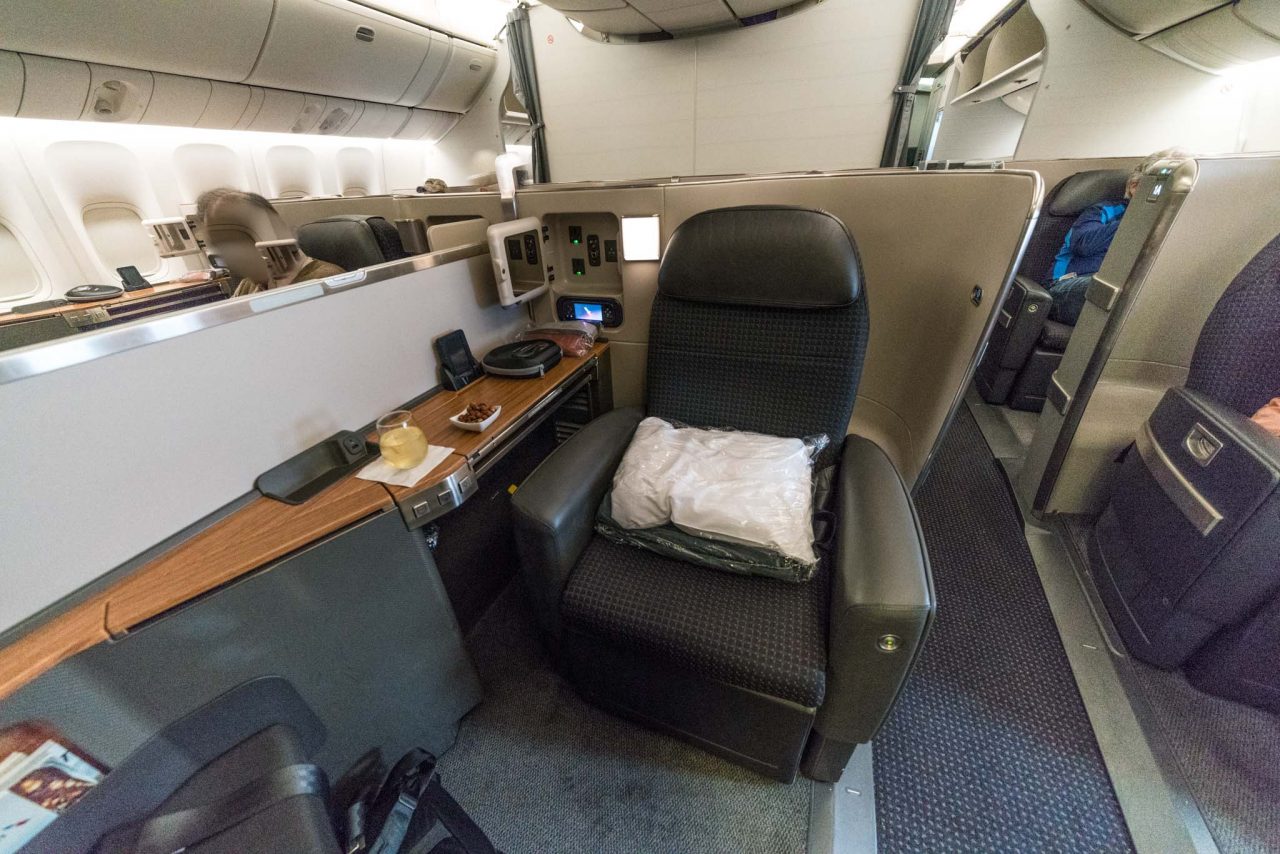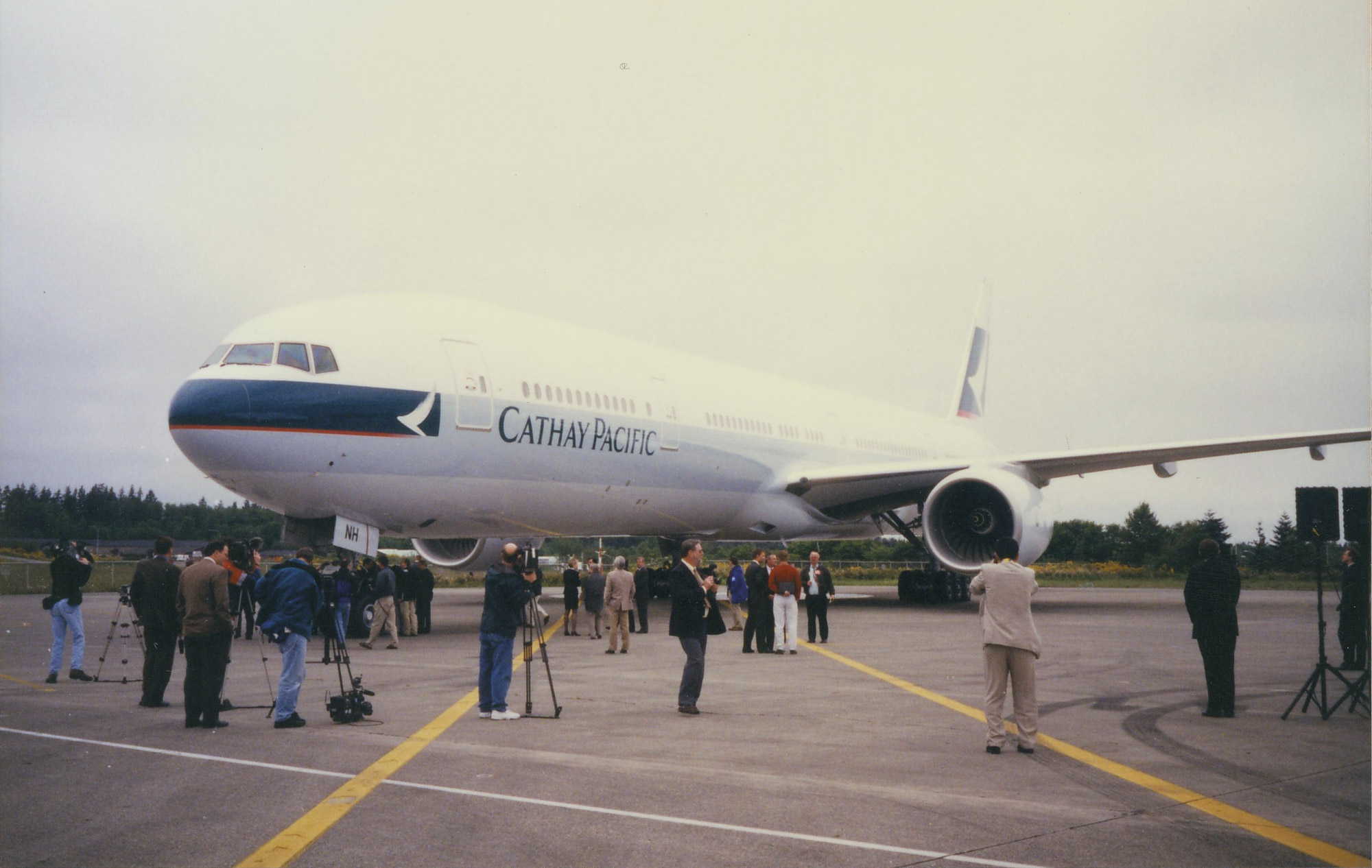First Boeing 777
The first passenger Boeing 777 built is being flown to a museum today, having spent the last quarter of a century ferrying bods from A to B.


China Airlines has received the first of six Boeing 777 Freighters, officially becoming the 20 th operator of the world’s largest and longest range twin-aisle freighter. The 777 Freighter joins the airline amid growing demand for dedicated freighters as operators grapple with the impacts from the COVID-19 pandemic.
The Boeing 777's unique combination of superior range, outstanding fuel efficiency, and passenger-preferred comfort spells pleasant long-range travel. 777-200ER (261 Seats) First Class. Boeing - 1994-YearOf 777 First Flight. This first-class seat is wider than the one you’ll see in business class, but not by much. American’s 777-300ER includes eight first-class flat-bed seats that measure six feet in length and are 30 inches wide — the seat in business class is 26 inches wide — with 64 inches of pitch (78 inches when reclined).
Boeing is still building the 777 long-haul airliner to this day, albeit with more than a few tweaks to the original 1990s design.
Techies, particularly those in the APAC region, will be more than familiar with Boeing's products thanks to the wide spread of companies, locations and conferences baked into the industry. With more than 1,500 777s built, odds are a long-haul flight is being operated by one of them.
Registered in China as B-HNL, the very first production Boeing 777 rolled off the line in 1994, receiving the maker's number WA001 and entering the US register as N7771. For Boeing it marked a number of new technological innovations; it was their first fly-by-wire aircraft, and the first to be designed entirely by computer.
It spent three years as a flying testbed before being bought by Cathay Pacific, at which point it was completely overhauled, fitted with new Rolls-Royce engines in place of its original Pratt & Whitney turbofans, re-registered and delivered for passenger flights in 2000.
Airbus UK infosec gros fromage: Yep, we work with arch-rivals Boeing
READ MORESince its delivery from Boeing, according to Cathay Pacific, B-HNL racked up 20,519 flights totalling 49,687 flying hours with the airline. A potted history of the aircraft states that it flew 1,729 hours with Boeing in its testbed days, giving a grand total of 51,416 hours gracing the skies. The airline was one of half a dozen closely consulted by Boeing during the initial design phases of the 777's inception.
Around seven or eight flying hours will be added to B-HNL's total thanks to today's ferry flight, which started in China and, via a 55-minute hop to Hong Kong for refuelling, will end in the US, at the Pima Air and Space Museum in Tucson, Arizona.
The 777 was Boeing's answer to Airbus's A300 jets, which were the first long-ranged, wide bodied twin-engined aircraft with large passenger capacities. Today the 777 competes directly with the European manufacturer's A330 and A350 aircraft, in its 777-ER, LR and X variants. ®
Widebody passenger transport jets made their introduction in the 1960s early 70s in the form of the Boeing 747, McDonnell Douglas DC-10 and the Lockheed L1011 Tristar. Preparing for the retirement of the Boeing 727 faithful workhorse, Boeing in 1978 announced the 757 narrow body, as well as the 767 wide-body which was to go up against the Airbus A330. Boeing also was kicking around a Boeing 777 jet idea which was a tri-jet, to go up against the DC-10 and L1011.
ETOPS
The Boeing 757 and 767 models were well accepted by the market. The timing was fortuitous, as in the early 1980s new regulations were introduced governing the operations of twin-engine aircraft on transoceanic routes. ETOPS, (Extended-range Twin-engine Operational Performance Standards), allowed certificated aircraft to fly up to three hours (ETOPS180) from the nearest available alternative airfield. The Boeing 767 began to be used under this regulation on oceanic routes that did not require the seating capacity of the larger widebodies.
Boeing 777 First Class United
Filling the Gap
There was still a gap in Boeing’s stable of aircraft between the Boeing 767 and the Boeing 747 which needed to be filled.
McDonnell Douglas announced the MD11 to replace the ageing DC10. Airbus had the Airbus A330 and A340. In 1986 Boeing floated ideas to create an enlarged Boeing 767. Called the Boeing 767-X, the design had a longer fuselage, larger wings with winglets and a wider cabin. The response from airlines was not encouraging at all. The market called for an even wider fuselage, flexible cabin layouts and better fuel economy than could be delivered by any Boeing 767 variant.
A New Design
In 1988 Boeing reacting to the market, acknowledged that a brand new design was called for and the Boeing 777 idea was born.

In a departure from the norm, Boeing gathered 8 leading airlines to become part of the design group. The Working Together Group, as it was called, was made up of All Nippon Airways, American Airlines, British Airways, Cathay Pacific Airways, Delta Air Lines, Japan Airlines, QANTAS, and United Airlines. Rather than presenting the market with what Boeing perceived as their idea of what was required, customers had direct input.
Boeing 777 History Time Line
Boeing 777 First Class Seats
| Date | Event |
|---|---|
| 08 December 1989 | Boeing made offers of the Boeing 777 to airlines. |
| January 1990 | The first meeting of the Working Together Group. (All Nippon Airways, American Airlines, British Airways, Cathay Pacific Airways, Delta Air Lines, Japan Airlines, QANTAS, and United Airlines.) |
| March 1990 | Boeing and the Working Together Group had settled on some basic design characteristics of the Boeing 777. |
| 14 October 1990 | United Airlines placed an order for 34 Boeing Boeing 777s powered by Pratt and Whitney engines, becoming the launch customer for the type. |
| January 1993 | Boeing designers and around 240 airline teams gathered at Everett to address around 1,500 design issues. Modifications were made. Cathay Pacific influenced an increase of the fuselage diameter, All Nippon Airways demanded lengthening of the base model fuselage, whilst British Airways asked for more interior flexibility and increased weight options. |
| 4 January 1994 | Assembly begins on the first aircraft. |
| 9 April 1994 | The first Boeing 777 rolls off the production line. Aircraft WA001 is involved in many ceremonies. |
| 12 June 1994 | The Boeing 777 makes its maiden flight, beginning 11 months of testing. |
| 19 April 1995 | Boeing 777 receives its airworthiness certification from both the Federal Aviation Authority (FAA, U.S.) and the Joint Aviation Authorities (JAA, Europe). |
| 15 May 1995 | United Airlines takes delivery of its first Boeing 777. |
| 30 May 1995 | The 777 with Pratt and Whitney engines becomes the aircraft to be awarded ETOPS-180 on entry into service. This means the Boeing 777 can be used for trans-oceanic services provided it does not fly further than 180 minutes from an available alternative landing site. |
| 7 October 1996 | The Boeing 777 200ER with extended range and increased payload capability made its maiden flight. |
| 17 January 1997 | The Boeing 777 200ER received both FAA and JAA certification. |
| 9 February 1997 | The Boeing 777 200ER enters service with British Airways. |
| 2 April 1997 | A Malaysia Airlines Boeing 777 200ER flying from Everett to Kuala Lumpur broke the record for an aircraft non stop flight. It flew 20,044Km (10,823NM) in 21 hours and 23 minutes. It was aptly named Super Ranger. |
| 16 October 1997 | The Boeing 777 300 made its maiden flight. At 73.0 Metres (242.4 Feet) it was the longest airliner to have flown, a record to be held until the Airbus A340-600 was introduced. |
| 4 May 1998 | The Boeing 777 300 received type certification from both the FAA and JAA. |
| 27 May 1998 | Cathay Pacific, the launch customer for the Boeing 777 300, received their first aircraft. |
| 29 February 2000 | Boeing launched its next-generation twin-engine program concentrating on creating longer-range variants of existing types. Named Boeing 777-X it was a slow starter due to the downturn in the airline business in the early part of that decade. The first design to be offered, the Boeing 777 300ER was ordered by Air France. Ten were ordered. |
| 24 February 2003 | Boeing Boeing 777 300ER made its maiden flight. |
| 16 March 2004 | Type certification for the Boeing 777 300ER was granted by the FAA and EASA (replacement to the JAA). |
| 29 April 2004 | Air France took delivery of their first Boeing 777 300ER. |
| 15 February 2005 | The Boeing 777 200LR rolls out of the factory, being the second long-range Boeing 777 variant |
| 8 March 2005 | The Boeing 777 200LR makes its maiden flight. |
| 26 February 2006 | The Boeing 777 200LR set a record for the longest flight by a passenger jet by flying from Hong Kong to London, a distance of 21,602 kilometres (11,664 NM), in 22 hours and 42 minutes. |
| 2 February 2006 | The Boeing 777 200LR receives type certification from the FAA and EASA. |
| 26 February 2006 | Pakistan International Airlines took delivery of the first production model of the Boeing 777 200LR. |
| 23 May 2008 | The first 777F freighter version rolled out of the factory. |
| 14 July 2008 | The first Boeing 777F makes its maiden flight. |
| 6 February 2009 | Type certification of the Boeing 777F was received from the FAA and EASA. |
| 19 February 2009 | Air France received the first production model Boeing 777F. |
Emirates Boeing 777 First Class Price
If there is more you want to learn about this airliner, please visit Boeing 777 Home, Boeing 777 777X, Boeing 747 Order Book, Boeing 747 Specs and Boeing 747 Assembly,
First Boeing 777 Delivery
We welcome your comments below, is there more we could be showing or are there topics you would like to see? Thank you.